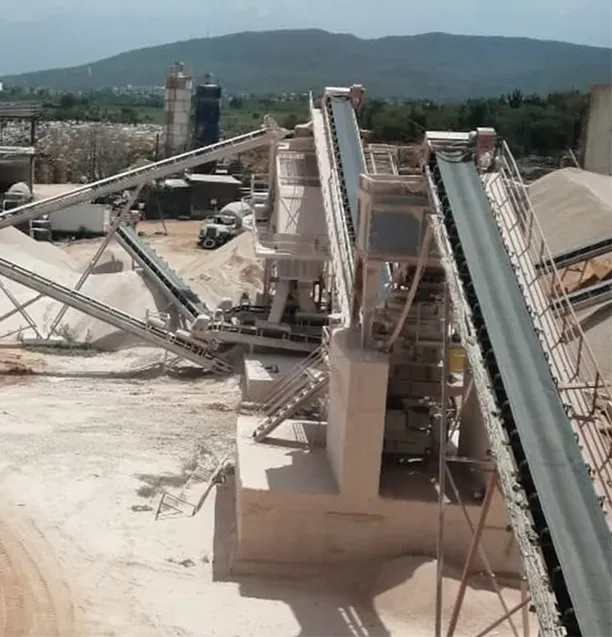Stationary crushing plants are used in the mining and quarrying industries to process raw materials into smaller sizes. They are critical in the production of raw materials that form the basis of infrastructure for roads, buildings, bridges and ports.
Stationary crushing plants are capable of processing large volumes of material. Due to their high productivity, they are preferred for long-term projects where mobility is not required. The main functions of these plants are to reduce the size of the materials (crushing) and then sorting (screening) them according to different sizes and properties.
Stationary Crushing and Screening Plants
What is a stationary crusher? A stationary crusher is a type of crushing and screening equipment used in industries such as mining, construction and quarrying. As the name suggests, stationary crushers are usually located in a position fixed in place and are not portable. They can be of various types, usually rock crushers, jaw crushers or impact crushers.
Stationary crushers are typically installed on a solid foundation anchored to the ground or a concrete base, which is necessary to support heavy operations and withstand the vibrations and forces applied during the crushing process.
What is the function of a crushing plant? A crushing plant plays an important role in many industries, especially mining, quarrying and construction. Its main function is to reduce the size of raw materials such as rocks, minerals and ore to smaller, manageable sizes for further processing or direct use in construction projects. Its main functions can be listed as follows:

What are the parts of a crushing plant?
A crushing and screening plant is a complex system of various components that work together to break rocks, stones and other materials into smaller, manageable sizes for further processing or direct use. The exact function of a crushing plant can vary depending on the requirements of the project, the type of material being processed and the desired end product. However, most crushing plants include the following basic parts:
Feeders: Used to regulate the flow of materials into the crushing process and ensure consistent and efficient production.
Crushers: The components that perform the actual crushing of the material. There are various types of crushers designed for a specific type of material or crushing stage.
Screens: Used to classify and sort crushed materials into different sizes.
Conveyors: Transports materials between different sections of the crushing plant.
Control Systems: These systems provide automatic control of the feeders, crushers, screens and conveyors. This optimizes the crushing process for efficiency, safety and minimal environmental impact.
Dust Suppression System: Provides dust control to minimize air pollution and ensure a safe working environment in crushing plants.
Hoppers: Large containers used to store raw materials before they are fed into the crushing process.
Discharge Chutes and Bins: Used to direct the flow of crushed materials from crushers and screens to conveyors or to collect and store the final product until it is transported or used.
These components work together to efficiently crush, separate and transport materials. The configuration and capacity of these components can vary greatly depending on the specific needs of the crushing plant, the type of material being processed and the requirements of the final product.
Contact us for more information about CONMACH stationary crushing plants.